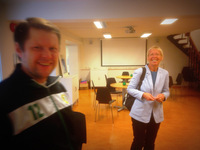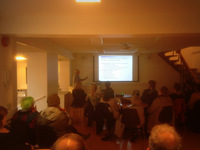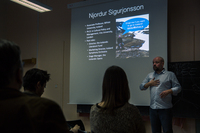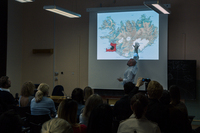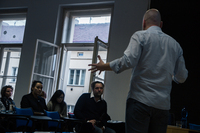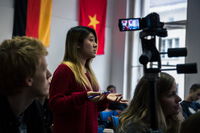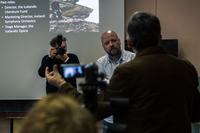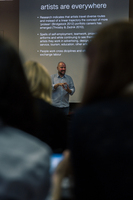Marketing of Galleries and Trade of Artworks in the Czech Republic and IcelandProject number - EHP-CZ07-MOP-2-098-2015
Marketing of Galleries and Trade of Artworks in the Czech Republic and Iceland Whit financial support by EHP and EEA grants - Programe of school cooperation and scholarship (CZO7) Who: ing. Radka Johnová, Ph. doc. Njörður Sigurjónsson, Ph.D.
Cooperation with: the Bifröst University in Iceland ART & DESIGN INSTITUTE received in 2015 a grant from the EEA and Norwegian funding for the cooperation and mobility project „Marketing of Galleries and Trade of Artworks in Czech Republic and Iceland" with Iceland's Bifröst University. For the newly formed college ART & DESIGN INSTITUTE the grant support represents the first direct experience of bilateral cooperation with foreign partners. The grant enabled the weekly exchange of educators from both universities. In October lectured doc. Njörður Sigurjónsson, Ph.D. at ART & DESIGN INSTITUT on the theme of Icelandic Art Market and Ing. Radka Johnová, Ph.D. lectured at Bifröst and in Reykjavik (Bifröst University has offices in two cities in Iceland) with a lecture about Art Marketing. In both countries, the guest lectures were accompanied and followed by a lively debate among pedagogues and students. The project included research interviews concerning the specifics of mutual art markets. From the Czech perspective is the Icelandic art market small, whole Iceland has about 329000 inhabitants, but it is very focused on effective sales and promotion of works by contemporary authors. Although Iceland is visited several times a year by many tourists, it is a destination that is attractive for its natural wealth, visitors do not come for the art, do not seek it and do not buy it. The interviews, which were conducted in two major private galleries in Reykjavik showed that the gallery owners take professional care of artists which they represent and the sale focuses both on stable domestic collectors and also to promote Icelandic artists to foreign markets, notably through participation on world's most important art fairs. On the contrary, typical for the Czech market is a larger number of private non-commercial galleries that do not represent the artists, but produce small solo and group exhibitions. Given the potential size of the market in the Czech Republic we see an untapped potential for the development of private commercial galleries that will in the long-term support and represent contemporary artists and pursue trade of their artworks. The remaining research interviews were conducted with students and young graduates of art schools. At this level the Czech and Icelandic markets do not differ and artists who want to make art as their living, must seek their first opportunity in the commercial sector- as creative people in advertising, in industrial design or in the creation of PR materials and their own work in their spare time. We can conclude that the grant made it possible to gain experience and new perspectives to both parties, both teachers and students.
|






